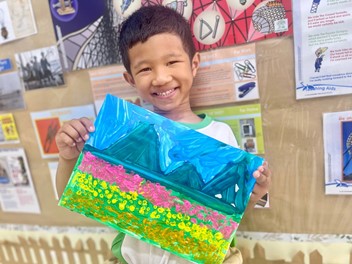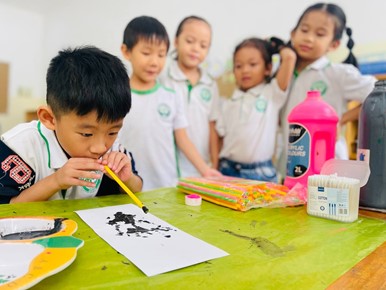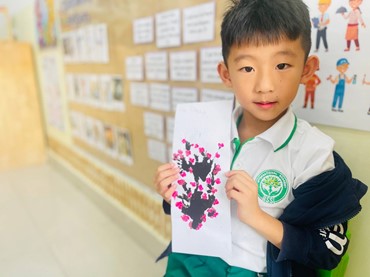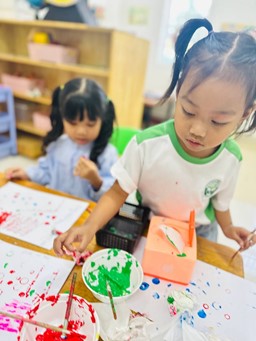At the preschool age, children are naturally drawn to creativity and exploration. Introducing them to painting at this early stage fosters their artistic expression and plays a pivotal role in their cognitive, emotional, and physical development.
In Kinderland International Preschool @ Cambodia ISS International Academy, children are encouraged to explore and experiment using different painting tools and materials, thus honing their problem-solving skills. Mixing colours, deciding on brush strokes, and creating diverse shapes and patterns nurtures their inventive thinking and encourages them to think outside the box.

Painting with Q-tips makes creating beautiful fields of tulips
Painting in a preschool setting also provides opportunities for children to communicate and collaborate with their peers. Working on group projects or sharing painting materials, they learn valuable social skills such as sharing, taking turns, and expressing their ideas.

Children are taking turns to create cherry blossoms by using a straw to spray the paint

Final drawing and it is a fantastic artwork.
Art is a critical part of a child’s development. It helps them to express themselves, explore their creativity, and discover new colours and shapes.

Learning the mixing of colours helps children to develop creativity.
In conclusion, painting holds immense value in preschool education, offering a multifaceted approach to nurturing young children’s cognitive, emotional, and social development. By embracing the joy of painting in the preschool setting, educators can create an environment that encourages curiosity, creativity, and collaboration, laying the groundwork for a lifelong appreciation of art and self-expression in the young minds they nurture.